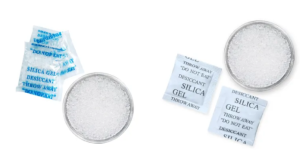The question of whether to remove desiccant from packaging often arises among consumers. Silica gel, a prevalent desiccant, serves the primary function of inhibiting moisture, which can be crucial for maintaining the quality of a wide array of products. Retaining or removing silica gel requires an understanding of its role and the nature of the item it is protecting.
Silica gel is a form of silicon dioxide, a substance renowned for its porous structure and hygroscopic properties, making it a superb absorber of humidity. The presence of silica gel in packaging is a proactive measure against the detrimental effects of moisture, such as mold, mildew, corrosion, and spoilage. Its inclusion is particularly important in the packaging of electronic goods, pharmaceuticals, and food products where dry conditions are essential for preserving function and freshness.
When considering whether to remove silica gel, one should assess the environment in which the product will be stored. If the product is to be kept in a humid setting or for an extended period, it may be wise to leave the desiccant in place. For instance, a camera stored with its silica gel packet is less likely to suffer from the effects of moisture.

However, if the product will be used immediately or if the packaging is damaged and the silica gel is exposed, it may be appropriate to dispose of it. Given that silica gel can be harmful if ingested by children or pets, it should be discarded safely. As previously mentioned, silica gel should not be simply thrown away; one should consider environmentally friendly disposal options or even find alternative uses for it around the home. Silica gel can be placed in storage boxes to protect collectibles or used in pantries to keep food dry.
In the event that silica gel is no longer needed, one should not overlook its potential for reuse. It can be regenerated by drying out the moisture it has absorbed, which is a testament to its durability and the sustainable approach that can be taken with its use.
Ultimately, the decision to remove silica gel desiccants hinges on the specific needs of the product and the conditions in which it will be kept. Silica gel is a safeguard, and its removal should be considered only if it no longer serves a protective purpose or if its presence could pose a risk. By understanding the function of silica gel and considering the environment, one can make an informed decision on whether its removal is appropriate.
